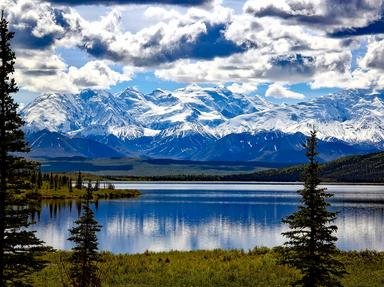Quiz Answer Key and Fun Facts
1. Possibly the most popular tourist destination in Alaska is a mountain, the native name for which is Denali. Political machinating was responsible for its also being named for a US President. From which state did he hail?
2. Alaska is known for its game fishing. Sportsmen from all over the world arrive on its shores seeking halibut and rockfish, but what delicious swimmer has been designated the state's official fish?
3. Although some are undergoing recession, Alaska's glaciers are plentiful and beautiful. What causes the intense blue coloration that often appears here and there in a glacier?
4. Alaskan fishing is all very well, but whale-watching is a whole different experience! What is the term for a whale's shooting up out of the water?
5. Whittier is a coastal town where day cruises originate and big cruise ships dock. Its citizens are domiciled there in an unusual way. Can you identify it?
6. The Iditarod is a famed 1000-mile dogsled race that is run each year across Alaska. Its usual starting point is in the city of Anchorage and the races ends in Nome. Given this, what general direction does the race course take?
7. Juneau is unique among US capital cities because of what feature?
8. Which of the animals listed, all native to Alaska, represents the largest member of its family?
9. Vegetables grown during the summer season in Alaska are huge! What causes this, given the short growing season?
10. In 1964, an event occurred in Alaska that its residents still talk about a lot today. What took place over four long minutes on March 27, 1964?
Source: Author
austinnene
This quiz was reviewed by FunTrivia editor
Tizzabelle before going online.
Any errors found in FunTrivia content are routinely corrected through our feedback system.

